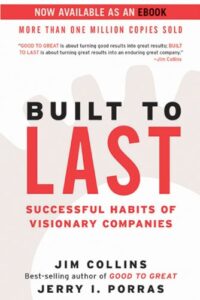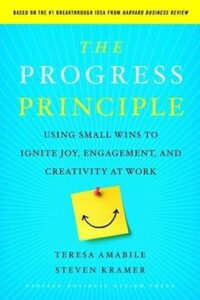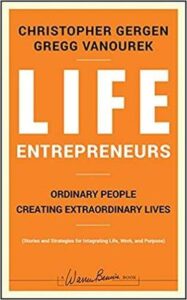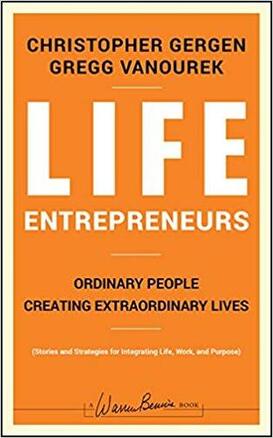Have you become complacent? Have you been lulled into a state of easy contentment? Or are you at risk of not paying enough attention to potential problems? Is complacency preventing you from trying harder and making needed improvements?
It’s a common trap. Perhaps you’ve been complacent about your health—or the health of those you love? Have you been complacent about your work, team, leadership, or organization? Or complacent about your relationships? About democracy or the planet?
You may be struggling with complacency if you’re taking things for granted or if you have too much routine. Do things feel monotonous?
Are you sticking to what you know? Staying in your comfort zone and avoiding risk? Are you “phoning it in”? Have you stopped learning and growing? Is your ambition waning?
Perhaps you’re wondering,
Is this it?
Where did all my time go?
Isn’t there something more I should be doing with my life?
There’s nothing wrong with comfort per se, or with feeling satisfied. You probably want them in your life. The problem is when you have too much of them and lose your inner fire to fight for your dreams or your zest for life.
Complacency becomes a problem when it’s sapping your motivation, when it’s leading to inaction when action is warranted, when it’s detracting from your sense of hope, when it’s leading to mediocrity. Is it robbing you of future opportunities and benefits, or derailing your career?
14 Complacency-Busting Actions
Fortunately, there’s much you can do to avoid complacency (or to break through it when you’re in it). Here are 14 complacency-busting actions you can take:
1. Start acting with urgency. Like your time counts. Because it does—and probably more than you’re realizing now.
2. Invoke deliberate agitation. Try using what Tyler Hakes calls “deliberate agitation.” Think of it as shaking a snow globe. He writes:
“You let things settle into place just long enough and then shake them up. Watch to see if they fall into the same patterns or if something new and better emerges…. You deliberately and intentionally question things and change them before they become a problem. You remain vigilant in trying to improve so that way you don’t fall into the trap of complacency that leads to eventual failure.” -Tyler Hakes
3. Dream big. Think expansively about all you want to do in your lifetime in different areas, from family, relationships, and work to education, service, travel, and more. When you do that, you start to feel the powerful pull of your deepest aspirations.
4. Step out of your comfort zone. Has fear held you back from venturing forth and risking yourself? When you push yourself, take risks, and dare to have adventures, your blood races. You start to feel awake and alive again.
5. Strive for a BHAG—a “big, hairy audacious goal.” It can be a life goal or a work goal, but a true BHAG should take your breath away with how bold it is and how amazing it would be if you could make it happen.
“…there is a difference between merely having a goal and becoming committed to a huge, daunting challenge—like a big mountain to climb…. Like the moon mission, a true BHAG is clear and compelling and serves as a unifying focal point of effort…. people like to shoot for finish lines. A BHAG engages people—it reaches out and grabs them in the gut.”
-Jim Collins and Jerry Porras in Built to Last
6. Build your top priorities and most important activities into your calendar. Doing so will ensure you make progress on your top goals. That way, you can not only develop good and productive habits but also become the sort of person who consistently gets big stuff done.
7. Enlist support. Consider recruiting an “accountability partner”—someone who can help keep you on track (such as a training buddy or someone you can send regular progress reports to).
8. Identify and remove barriers to change. When you’re stuck, it’s easy to become complacent and acclimatize yourself to the new situation. Why not get to work instead on identifying the major obstacles to progress and how to overcome them?
9. Notch short-term wins on meaningful work to build momentum. Draw on what researchers call the “progress principle”:
“…of all the positive events that influence inner work life, the single most powerful is progress in meaningful work; of all the negative events, the single most powerful is the opposite of progress—setbacks in the work. We consider this to be a fundamental management principle: facilitating progress is the most effective way for managers to influence inner work life. Even when progress happens in small steps, a person’s sense of steady forward movement toward an important goal can make all the difference between a great day and a terrible one.”
-Teresa Amabile and Steven Kramer in The Progress Principle
10. Take full responsibility for everything in your life. Be what my co-author, Christopher Gergen, and I call a “LIFE entrepreneur.” You’re much more likely to thrive when you take ownership of your life and recognize your agency—when you take your life back. LIFE entrepreneurs go out and create opportunities for themselves. They intentionally craft a good life with good work, and they bring their dreams to life.
#11. Get clear on your personal purpose, values, and vision:
- Your purpose is why you’re here. It’s what gives you a sense of meaning and significance—often by connecting with and serving others.
- Your values are what’s most important to you—your core beliefs and principles that guide your decisions and behavior.
- And your vision is what you aspire to achieve in the future—and what success looks and feels like for you.
12. Cultivate vitality. You’ll feel better and perform at a higher level when you develop physical, mental, emotional, and spiritual health and wellness. Being intentional about productive and energizing habits will pay big dividends.
13. Let go of limiting beliefs. Ever been your own worst enemy? Have you locked yourself in a mental prison of judgment, negativity, and rumination? Never forget that you always retain the power to upgrade your thoughts, and it can help you avoid the trap of complacency.
14. Set and maintain high standards. You tend to rise or fall to the standards you set. Why not leverage deadlines, accountability, and high standards to propel you forward?
Related Traps
Complacency is common, and it can be deeply damaging. It also tends to come with several associated traps:
- drifting through life
- avoiding hard situations, people, or truths
- settling for “good enough” and accepting significantly less than what we want or deserve
- postponing happiness and deferring dreams
- inertia and not making needed changes
Final Thoughts
Are you letting the complacency trap rob you of quality time and experiences? Of achievement and passion?
It’s tricky because you probably want satisfaction and serenity, and not a life of frenetic striving or perpetual busyness.
Somewhere in between the extremes, there’s a healthy place of urgency to live intentionally, achieve important things, serve others, and cherish your days, not squandering your time in a cloud of complacency.
Wishing you well with it—and let me know if I can help.
Reflection Questions
- To what extent has complacency crept into some aspects of your life and work (or your family or organization)?
- What will you do to regain the motivation and urgency to escape this trap?
Tools for You
- Traps Test (Common Traps of Living) to help you identify what’s getting in the way of your happiness and quality of life
- Quality of Life Assessment to help you discover your strongest areas and the areas that need work and then act accordingly
- Goal-Setting Template to help you set goals you can achieve based on best practices
Postscript: Inspirations on Complacency
- “The life you have left is a gift. Cherish it. Enjoy it now, to the fullest. Do what matters, now.” -Leo Babauta, author
- “Complacency keeps you living a comfortable life… not the life you desire. Challenge yourself to do something different. Then, notice the new charged quality of your life.” -Nina Amir, author and coach
- “The tragedy of life is often not in our failure, but rather in our complacency; not in our doing too much, but rather in our doing too little; not in our living above our ability, but rather in our living below our capacities.” -Benjamin E. Mays, minister
- “I really try to put myself in uncomfortable situations. Complacency is my enemy.” -Trent Reznor, musician and singer-songwriter
- “History and experience tell us that moral progress comes not in comfortable and complacent times, but out of trial and confusion.” -Gerald R. Ford, former U.S. president
- “By far the biggest mistake people make when trying to change organizations is to plunge ahead without establishing a high enough sense of urgency in fellow managers and employees.” -John Kotter, founder of Kotter International and Harvard Business School Professor
- “Without a sense of urgency, desire loses its value.” -Jim Rohn, author and entrepreneur
“So many people live within unhappy circumstances and yet will not take the initiative to change their situation because they are conditioned to a life of security, conformity, and conservatism, all of which may appear to give one peace of mind, but in reality nothing is more dangerous to the adventurous spirit within a man than a secure future. The very basic core of a man’s living spirit is his passion for adventure. The joy of life comes from our encounters with new experiences, and hence there is no greater joy than to have an endlessly changing horizon, for each day to have a new and different sun.” -Jon Krakauer, Into the Wild
+++++++++++++++++
Gregg Vanourek is a writer, teacher, and TEDx speaker on personal development and leadership. He is co-author of three books, including LIFE Entrepreneurs: Ordinary People Creating Extraordinary Lives (a manifesto for integrating our life and work with purpose, passion, and contribution) and Triple Crown Leadership: Building Excellent, Ethical, and Enduring Organizations (a winner of the International Book Awards). Check out his Best Articles or get his monthly newsletter. If you found value in this article, please forward it to a friend. Every little bit helps!














